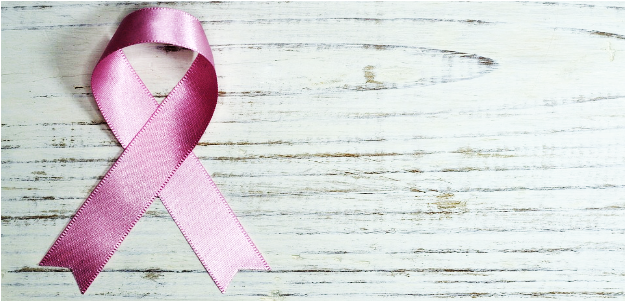Think Pink:
October is Breast Cancer Awareness Month!
If you’ve been noticing an excess of pink in the streets this month it’s not by coincidence. Pink apparel and accessories such as armbands, socks, t-shirts, sweaters, and hoodies are found out and about in peculiar abundance every year around this time, and that’s because during the month of October pink is promoted in high volume by organizations such as the American Breast Cancer Foundation, the National Breast Cancer Foundation, the Breast Cancer Research Foundation, and many others in support of Breast Cancer Awareness.
The Facts
Breast cancer is the most common type of cancer in the United States, with 279,100 new cases expected in 2020, according to the NIH’s National Cancer Institute as reported by the American Cancer Society. There are multiple subtypes of this disease and it is important that the general public be educated to this threat in order to diagnose and aggressively fight it at its early stages.
Invasive Ductal Carcinoma (IDC)
The most common form, accounting for 70-80% of all incidences, is known as invasive ductal carcinoma (IDC). It occurs when cancerous cells develop in the breast ducts—the tubes that deliver breast milk to the nipples.
Invasive Lobular Carcinoma (ILC)
Less frequent but still prominent at 10-15% of all incidences, are cases of invasive lobular carcinoma (ILC). This type starts in the glands that produce breast milk.
Other Subtypes
There are rarer subtypes of breast cancer—labeled carcinoma due to these types of cancers originating in the skin’s epithelial layer or tissue surrounding organs—including tubular carcinoma, mucinous carcinoma, medullary carcinoma, invasive papillary carcinoma, inflammatory breast cancer, and carcinoma “in situ” of the ductal and lobular types; “in situ” meaning the cells have not spread from the point at which they first formed.
Awareness
While all this may seem intimidating, complicated, and difficult to pronounce, the solution to combating this disease is not, and it comes in the form of a pink wave that covers the world each October. Every year at this time we find billboards, merchandise, ad campaigns, fundraisers, and sponsorships dedicated to raising awareness for breast cancer. We even see athletes sporting pink socks, shoes, jerseys, decals, helmets, and gloves; and not least of all there is the ubiquitous pink ribbon that started it all. (Actually the first breast cancer awareness ribbons were peach in color as created by Charlotte Hayey, but were later appropriated by Self Magazine and used in the color pink to avoid legal liabilities).
This simple colorful twist to random items of everyday life serves as a bold reminder for people to learn and stay aware of the need for testing, treatment, and preventative measures that can be instrumental in increasing the survivorship of this illness for grandmothers, aunts, mothers, wives, daughters, sisters, nieces, cousins, and grand daughters everywhere.
Prevention
To start, many lifestyle choices can play a role in reducing the risk of the onset of breast cancer. These include avoiding alcohol and smoking, maintaining a healthy weight, getting plenty of exercise and eating a healthy diet, breast-feeding, limiting hormone therapies, and avoiding radiation and environmental pollutants.
Testing
It is equally important that women maintain a regular schedule of testing for the disease as a means of preventing and tackling the problem. This process can start with a monthly self-exam performed:
- In the shower
- Lying down
- In front of a mirror
Using these methods women apply light pressure with three fingers to feel for lumps, and search for superficial signs such as dimpling, puckering, and other changes that may indicate the presence of abnormalities.
In addition to this, clinical exams performed by a physician should be regularly scheduled alongside mammograms. Mammograms are the standard diagnostic scan for breast cancer. They consist of an x ray procedure that produces an image of the inner breast tissue—revealing any potential abnormalities in ways that might otherwise not be observed. While most lumps are not cancerous any areas of suspicion can be addressed by the doctor with further testing, such as an ultrasound, an MRI, and a biopsy where cells are removed from a suspicious area for more tests. Early detection is key to saving lives in the fight against breast cancer. With diagnosis, doctors can immediately begin treating any threats.
USFHP’s TRICARE Prime plans let women select their own personal physicians and specialists rather than being routed to medical centers with rotating staves of doctors to perform these types of screenings. Our coverage extends to a network of over 20,000 of the best healthcare professionals who can implement the right treatments for each patient’s situation should they become necessary.
So this fall be sure to join the wave, ‘Get Your Pink On!’, and help us fight breast cancer by raising awareness.
Call now at 1-800-241-4848 and let us get you covered.


